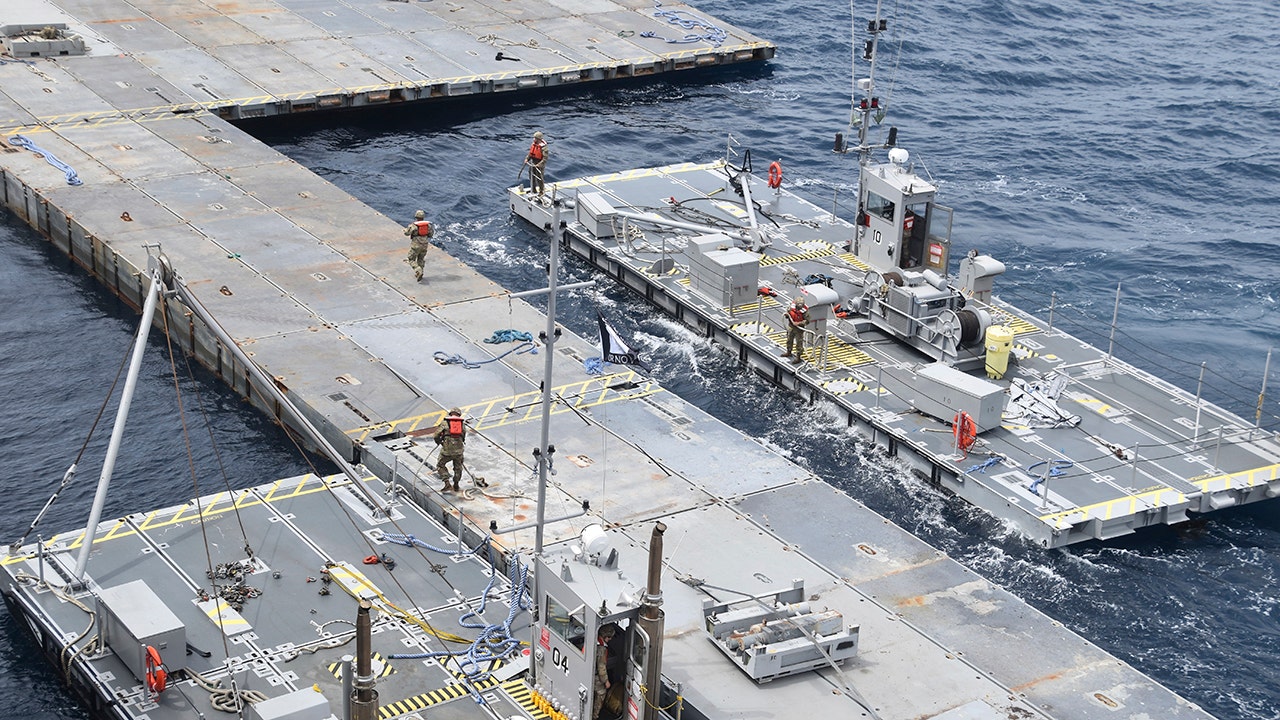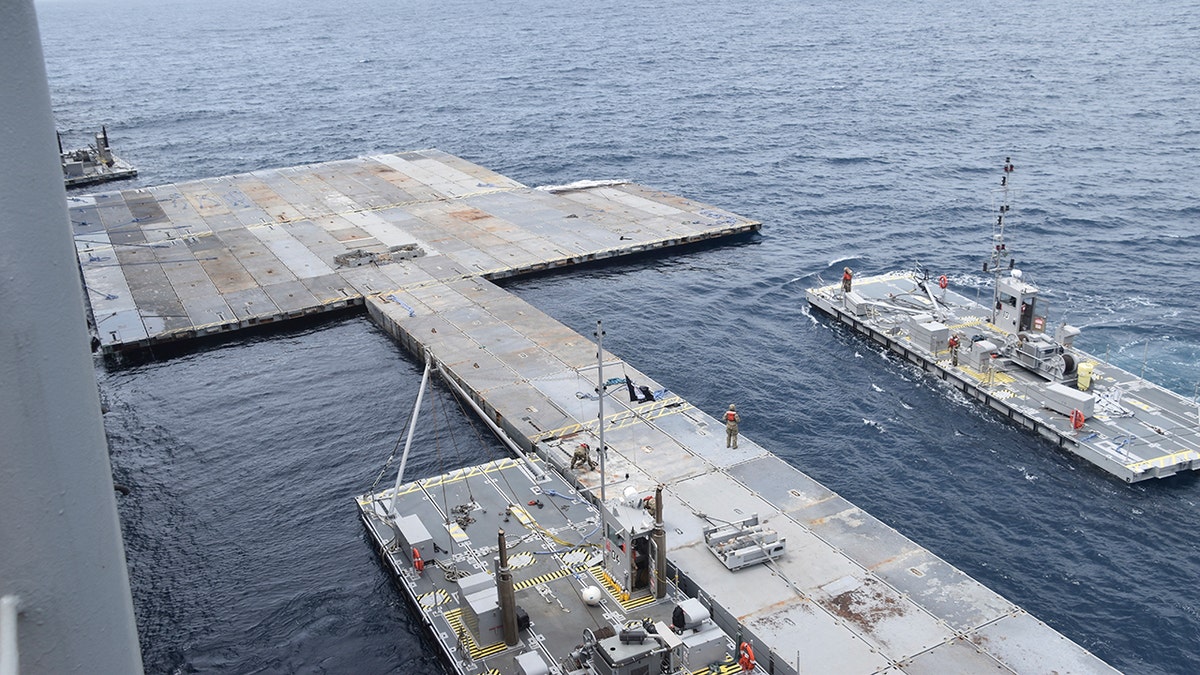World
Could Biden and Trump win their party's nominations this week? What to watch in the next contests
NEW YORK (AP) — President Joe Biden and his likely Republican challenger, Donald Trump, are on track to win enough delegates this week to become their parties’ presumptive nominees, ushering in a bruising eight-month campaign for the White House.
Elections in four states on Tuesday will likely give Biden and Trump the delegates they need to clinch the nominations. Their trajectories are hardly in doubt after dominant performances in last week’s Super Tuesday contests forced the last major primary challengers out of the race.
But for many voters who aren’t attuned to the daily twists and turns of the nation’s turbulent politics, this week could be a crystalizing moment, reinforcing that another Biden-Trump campaign is virtually guaranteed whether Americans want it or not. And that rematch — the first in a U.S. presidential election since 1956 — is poised to deepen searing political and cultural divides.
Here’s what we’re watching:
WILL TRUMP CLINCH?
Tuesday should be a wakeup call for those who still doubt that Trump, who is facing 91 felony counts in four separate criminal cases, will represent the Republican Party in the general election this fall.
The former president is on track to win enough delegates to become the Republican Party’s presumptive presidential nominee — if he continues to dominate the way he has throughout the primary season. And with no major opposition on the ballot, there is every reason to believe he will.
As of Sunday, Trump was 140 delegates short of the 1,215 needed to win the Republican nomination at the party’s national convention this summer. There are 161 Republican delegates at stake on Tuesday in Georgia, Mississippi, Washington state and Hawaii.
With a strong showing on Tuesday, Trump can sweep all the delegates in Georgia, Mississippi and Washington state. Hawaii allocates delegates proportionally so other candidates could win a few, even with a small share of the vote.
WHAT ABOUT BIDEN?
Democrats who did not want Biden to run again are about to be disappointed.
Like Trump, Biden is on the verge of securing sufficient delegates to become the Democratic Party’s presumptive presidential nominee.
The president enters Tuesday 102 delegates short of the 1,968 needed to win the Democratic nomination. There are 254 Democratic delegates at stake delegates at stake Tuesday in Georgia, Mississippi and Washington state, in addition to party-run contests for the Northern Mariana Islands and Democrats Abroad that conclude that day.
With no major opponents, Biden is on pace to reach that mark. But he’s also facing continued resistance from his party’s left flank that threatens to tarnish the achievement.
A collection of progressive activists and faith leaders in Georgia and other states is encouraging Democratic primary participants not to vote for any presidential candidate. That’s after a protest “uncommitted” vote in Michigan recently secured two delegates.
The symbolic protest is meant as a warning on Biden’s reelection over his support for Israel’s war against Hamas in Gaza.
While Biden’s campaign says it’s not worried, the president must unite his party behind him if he hopes to defeat Trump in November.
Following a fiery State of the Union address that he says fueled a jaw-dropping $10 million in donations in just 24 hours, Biden has an opportunity to build new momentum with a strong showing Tuesday.
GEORGIA PREVIEW
Georgia has emerged as one of the nation’s premier swing states in recent years. And both candidates are eager to put up a strong showing and flex their organizational muscle in what is effectively a dress rehearsal for November’s far more consequential general election.
The state was a pivotal battleground in 2020 — so close that Trump finds himself indicted here for his push to “find 11,780 votes” and overturn Biden’s victory.
Both candidates made Georgia a priority in the days leading up to Tuesday’s primary. But they offered very different messages in dueling rallies over the weekend.
Trump’s Saturday rally opened with a message asking attendees to support the people serving jail time for their roles in the Jan. 6 Capitol insurrection. The former president then appeared with MAGA firebrand Rep. Marjorie Taylor Greene, R-Ga., whom he called “brave” for yelling at Biden during his State of the Union address. Trump also highlighted his private meeting the night before with Hungarian Prime Minister Viktor Orbán, who has rolled back democracy in his country.
Biden, working to energize his coalition of voters of color, young people and suburbanites, pointed to Trump’s controversial associates and his embrace of the far right. “Our freedoms are literally on the ballot this November,” he said.
IS THIS RACE ABOUT TO CHANGE?
With both candidates poised to clinch their nominations, we are about to move formally from the primary to the general election phase of the 2024 election.
But it’s fair to say we don’t know exactly what that will look like.
Typically at this moment, candidates will shift their message to speak to a broader swath of voters — especially moderates and independents — that play a more influential role in general elections compared to the hardcore base voters that decide primaries.
But if this weekend was any indication, Trump is showing little interest — or ability — to embrace a more inclusive or moderate tone. He’s still falsely insisting that the 2020 election was stolen and praising those who stormed the Capitol on one of the darkest days in modern U.S. history.
We’ll be paying close attention to the tone of his official response — and his social media posts — after he clinches the nomination.
On the Democratic side, we’re about to learn whether Biden’s coalition changes its view of the race as the reality sets in that this election is now a binary choice between Biden and Trump. Biden’s campaign is betting big that’s the case.
On the eve of Tuesday’s primaries, the Democratic president unveiled a new campaign ad as part of a $30 million battleground-state investment casting himself as more effective than Trump — despite concerns about Biden’s age.
Trump won’t make it easy on Biden. A super PAC backing Trump released a new ad that asks, “If Biden wins, can he even survive till 2029?”
Buckle up. The next eight months could get bumpy.

World
Mapping Russia’s Sudden Push Across Ukrainian Lines

All of a sudden, Russian forces are making progress in many directions at once.
In recent days, Russian troops have surged across the border from the north and opened a new line of attack near Kharkiv, Ukraine’s second-largest city, capturing settlements and villages and forcing thousands of civilians to flee.
Sources: Institute for the Study of War with American Enterprise Institute’s Critical Threats Project, Ukrainian officials
The New York Times
It may be a feint. The real goal may be to divert already-weakened Ukrainian forces from critical battles elsewhere. But one thing is clear: The map of battle in Ukraine looks a lot different today than it did only a week ago.
Ukraine is more vulnerable than at any time since the harrowing first weeks of the 2022 invasion, a range of soldiers and commanders have said in interviews.
It is too soon to know if the war in Ukraine has hit a turning point. But Russia’s progress isn’t just in the northeast.
Russia has been making small but geographically broad gains across the eastern front. And what started as a modest Russian advance near Avdiivka has grown in recent weeks into a roughly 15-square-mile bulge that is complicating the defense of the Donetsk region.
Sources: Institute for the Study of War with American Enterprise Institute’s Critical Threats Project, Ukrainian officials The New York Times
Months of delays in American assistance, a spiraling number of casualties and severe shortages of ammunition have taken a deep toll, evident in the exhausted expressions and weary voices of soldiers engaged in daily combat.
Whether Russia will succeed in weakening Ukraine’s defenses in other parts of the front line remains to be seen.
A big objective, according to Franz-Stefan Gady, a Vienna-based military analyst, appears to be to draw Ukrainian forces away from Chasiv Yar, a town on strategic high ground where Ukrainians have fought for weeks to stave off an attack.
Russia’s broad range of attacks appears to be stretching Ukrainian forces thin. Gen. Kyrylo Budanov, the head of Ukraine’s military intelligence agency, said in an interview from a bunker in Kharkiv this week that it has been difficult to find the personnel to shore up defenses in the northeast.
“All of our forces are either here or in Chasiv Yar,” he said. “I’ve used everything we have. Unfortunately, we don’t have anyone else in the reserves.”
World
US military constructs hulking metal pier amid Biden's $320 million gamble to get aid into Gaza

The U.S. military has completed the construction of a hulking metal pier that is expected to be jabbed into a beach in northern Gaza in the coming days, officials said.
Completing the massive makeshift structure — approximately 1,500-ft long or the length of five U.S. football fields — is the first step in the Biden administration’s two-month-long, $320 million gamble to open a sea route to get humanitarian aid through the eastern Mediterranean and into Gaza, where Israel continues to wage war with the Hamas terror group.
The construction of the new floating pier and causeway is risky for President Biden and the Pentagon as aid delivery teams face unknown dangers and uncertainties as they attempt to work around the challenges of getting aid into Gaza through the Rafah border.
“In the coming days, you can expect to see this effort underway. And we are confident that we will be able to, working with our NGO partners, ensure that aid can be delivered,” Maj. Gen. Pat Ryder, the Pentagon press secretary, said Tuesday, noting humanitarian groups were ready for the first shipments through the new U.S. maritime route.
REPUBLICAN SAYS BIDEN HAS ‘STRENGTHENED’ HAMAS BY WITHHOLDING AID FROM ISRAEL: ‘COMPLETELY INCOMPETENT’
In this image provided by the U.S. Army, soldiers assigned to the 7th Transportation Brigade (Expeditionary) and sailors attached to the MV Roy P. Benavidez assemble the Roll-On, Roll-Off Distribution Facility (RRDF), or floating pier, off the shore of Gaza in the Mediterranean Sea on April 26, 2024. (U.S. Army via AP)
The administration’s effort to open the additional sea route comes as the intensifying war between Israel and Hamas has neared the land crossings in Rafah.
Scott Paul, an associate director of the Oxfam humanitarian organization, described the sea route as “a solution for a problem that doesn’t exist” because land crossings could bring in all the needed aid, he said.
Paul suggested the amount of aid that is allowed to be delivered into Gaza is dependent on Israeli officials allowing it. Some officials have expressed concerns the aid could fall into the hands of Hamas, the very terrorists that Israel is seeking to eliminate from the Palestinian territory.
UN REVISES GAZA DEATH TOLL, ALMOST 50% LESS WOMEN AND CHILDREN KILLED THAN PREVIOUSLY REPORTED
“Like all of the land crossings, it comes down to the consent of the government of Israel,” Paul said. “If Israel is comfortable with allowing the maritime corridor to function … then it will work in a limited way. And if they don’t, it won’t. Which is why it’s a very, very expensive alternative.”

The pier is part of the Army’s Joint Logistics Over The Shore (JLOTS) system which provides critical bridging and water access capabilities. (U.S. Army via AP)
Ophir Falk, foreign policy adviser to Israeli Prime Minister Benjamin Netanyahu, said Tuesday that the country had enabled the entrance of thousands of aid trucks into Gaza and would continue to do so.
Falk accused Hamas of disrupting aid distribution by hijacking and attacking convoys.
The Israeli military said in a statement Tuesday that it will keep acting in line with international law to distribute aid to Gaza. It also has previously said there are no limits on aid.
Israeli Prime Minister Benjamin Netanyahu pledged to Biden to allow in more aid and safeguard those workers.

U.S.-military-backed construction crews in the eastern Mediterranean created a hulking metal dock, completing the first part of the Biden administration’s $320 million effort to open a sea route to get humanitarian aid into Gaza. (AP Photo/Leo Correa)
Anastasia Moran, an associate director for the International Rescue Committee, a global humanitarian group, said truckloads of aid entering Gaza increased by 13% last month.
The Israel-Hamas war has been particularly lethal to Palestinian civilians residing in Gaza with Palestinian health officials estimating more than 35,000 have been killed. Israeli officials estimate the number of deceased civilians is approximately 16,000 civilians. A U.N report from May 8 found the number of women and children killed so far in the war to be just under 13,000.
The Associated Press contributed to this report.
World
Canadian Nobel-winning author Alice Munro dies aged 92

Munro was renowned for her short stories, which focussed on the frailties of the human condition.
Alice Munro, the Nobel Prize-winning Canadian author known for her mastery of the short story, has died at the age of 92.
Munro died at her home in Port Hope, Ontario, publisher Kristin Cochrane, chief executive officer of McClelland & Stewart, said in a statement on Tuesday.
“Alice’s writing inspired countless writers … and her work leaves an indelible mark on our literary landscape,” Cochrane said.
Munro published more than a dozen collections of short stories, which she focused on the frailties of the human condition and set in the rural Ontario countryside where she grew up.
Awarded the International Booker Prize for her body of work in 2009, and the Nobel Prize in Literature in 2013, Munro was diagnosed with dementia about a decade ago and was living in a care home.
Canadian Prime Minister Justin Trudeau said the world had “lost one of its greatest storytellers”.
“A true literary genius … her short stories about life, friendship, and human connection left an indelible mark on readers,” he said.
Munro was born on July 10, 1931, in Wingham, Ontario. Her father raised foxes and poultry, while her mother was a smalltown teacher.
Munro decided she wanted to be a writer when she was 11, and never wavered in her career choice.
“I think, maybe I was successful in doing this because I didn’t have any other talents,” she once explained in an interview.
“I’m not really an intellectual,” Munro said. “There was never anything else that I was really drawn to doing, so nothing interfered in the way life interferes for so many people.”
“It always does seem like magic to me.”
Munro’s first story, The Dimensions of a Shadow, was published in 1950, while she was studying at the University of Western Ontario.
Munro was three times awarded the Governor General’s Award for fiction, the first for Dance of the Happy Shades, a collection of stories published in 1968. Who Do You Think You Are (1978) and The Progress of Love (1986) also won Canada’s highest literary honour.
Her short stories were often published in the pages of prestigious magazines, such as The New Yorker and The Atlantic. Her last collection of work, Dear Life, appeared in 2012.
The characters in Munro’s stories were often girls and women who led seemingly unexceptional lives but struggled with issues ranging from sexual abuse and stifling marriages to repressed love and the ravages of age.
She was often likened to Anton Chekhov, the 19th-century Russian known for his brilliant short stories – a comparison made by the Swedish Academy when it awarded her the Nobel Prize.
Calling Munro a “master of the contemporary short story”, the Academy also said: “Her texts often feature depictions of everyday but decisive events, epiphanies of a kind, that illuminate the surrounding story and let existential questions appear in a flash of lightning.”
-

 Politics1 week ago
Politics1 week agoHouse Dems seeking re-election seemingly reverse course, call on Biden to 'bring order to the southern border'
-

 Politics1 week ago
Politics1 week agoFetterman says anti-Israel campus protests ‘working against peace' in Middle East, not putting hostages first
-

 News1 week ago
News1 week agoUS man diagnosed with brain damage after allegedly being pushed into lake
-

 World1 week ago
World1 week agoGaza ceasefire talks at crucial stage as Hamas delegation leaves Cairo
-

 World1 week ago
World1 week agoStand-in Jose Raul Mulino wins Panama presidential race
-

 World1 week ago
World1 week agoTech compliance reports, Newsletter
-

 News1 week ago
News1 week agoColumbia University cancels its main commencement ceremony after weeks of turmoil
-

 News1 week ago
News1 week agoCompass Direct LLC’s 2024 Registration in North Carolina


















